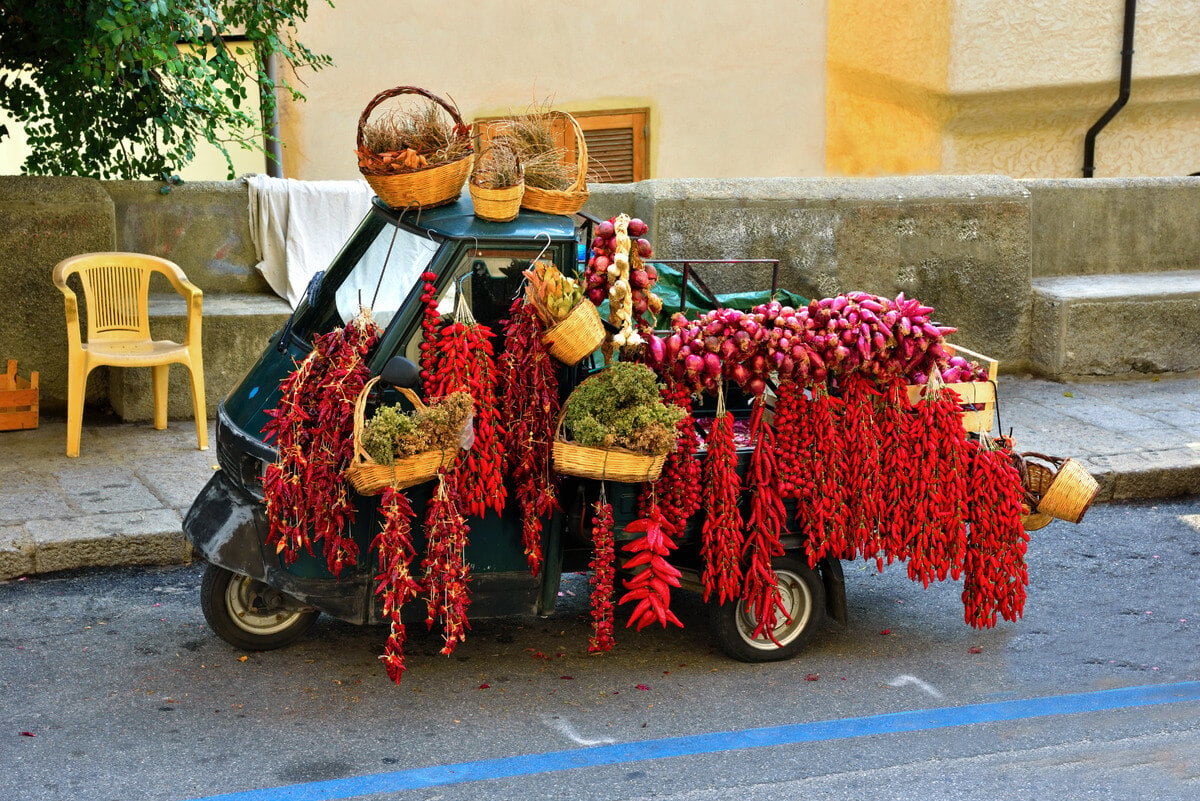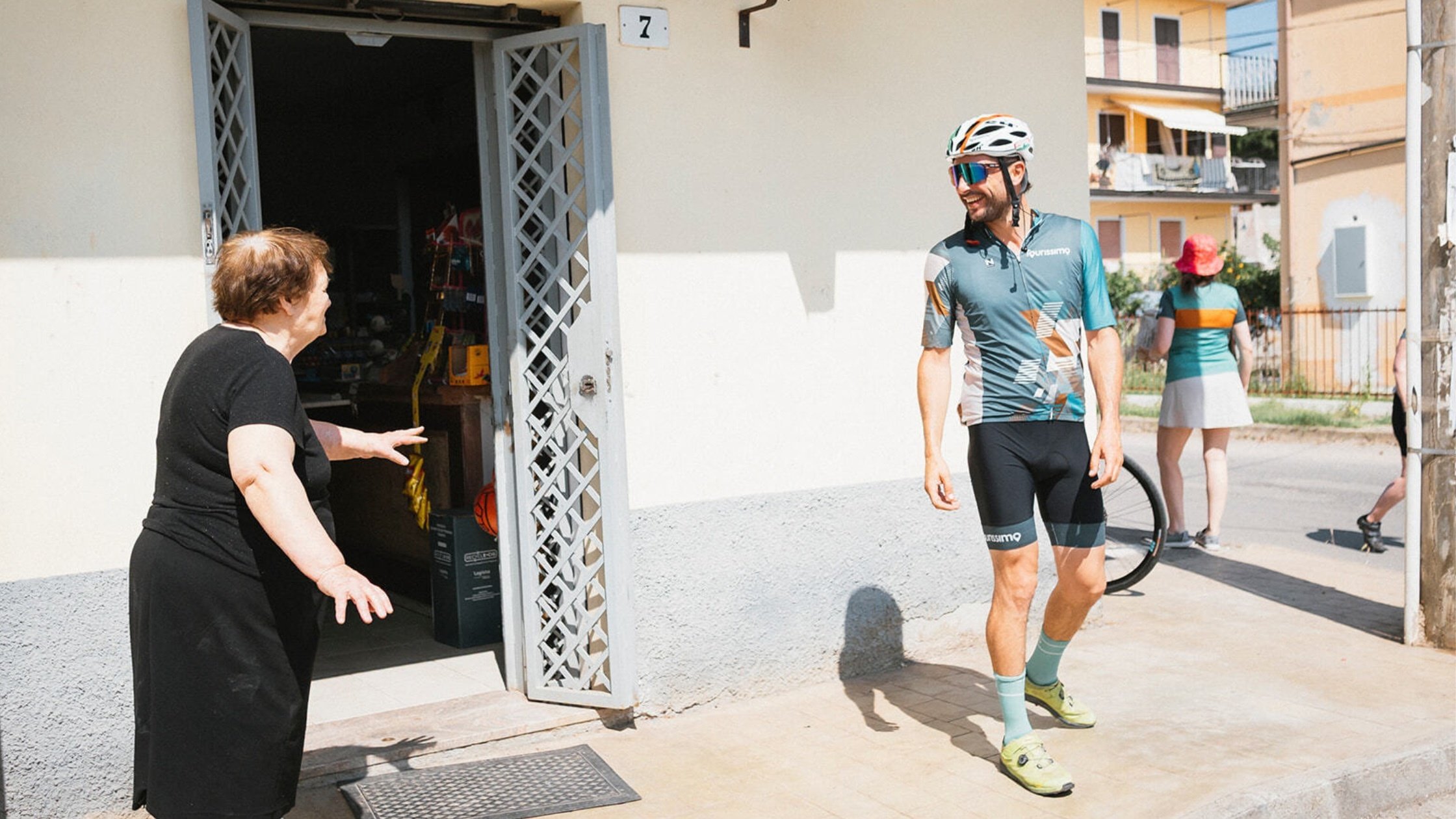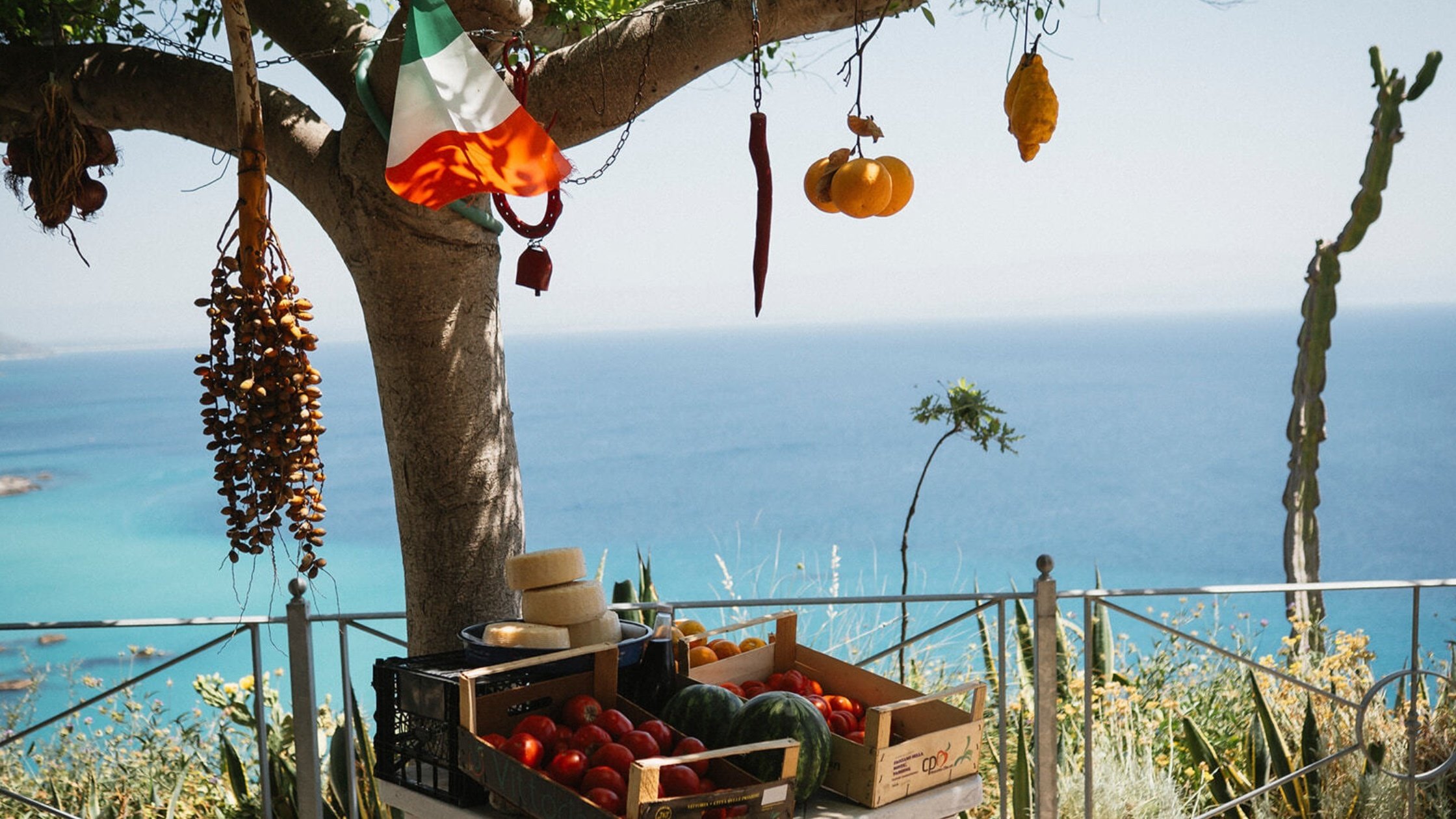Barolo is a red wine from Piedmont (northwest Italy) that for almost two centuries has been considered one of the best and most sophisticated reds in the wine world. The history of Barolo is also one of the most interesting ones a wine lover could come across. It is a bundle of suppositions and whispers.
By Barolo, we mean the “modern style” dry red wine made from 100% Nebbiolo grapes grown in the surroundings of the town bearing the same name. We are in the Langa - or Langhe - wine region of Piedmont.
The cultivation of this grape and the wine saw a great development during the Renaissance period (1300-1600). But back then it was a sweet Nebbiolo wine loosely and sporadically referred to as “Barol.”
Not much changed for a long time (wine wasn’t bottled at that time either) but that wine had great success among European diplomats and aristocrats. The future US president, Thomas Jefferson, while traveling around Europe mentioned the superb qualities of the wine in his diary, describing it as “almost as gentle as the Bordeaux, and as lively as Champagne.” Barolo of those years was like a sweet sparkling wine.
Producers at that time didn’t know how to turn all the sugars from must into alcohol. However, that undeveloped sugar allowed the wine to “last” during long trips around Italy and Europe. The challenge was to induce full fermentation and to produce a dry but stable wine that could travel, last, and age. The Nebbiolo grape had that potential. However, winemaking techniques were still under development.
How did we get from that sweet, freeze wine to the austere, dry, red wine known as today’s Barolo?
There are two stories, and two theories that back these stories. In my frequent trips to the Barolo production area, I’ve heard both stories and both seem factual and from reputable sources such as the Wi.Mu wine museum, the Renato Ratti private museum, the Royal Wine Cellars at Fontanafredda and the Wine Bank of Slow Food. On top of that many oral accounts point to one story or the other.
Before writing this blog article explaining the two stories of the history of Barolo wine I did some additional research. These stories are important to me because Barolo is not just any wine, because I am from Piedmont, and because Barolo is very much linked to important aspects of Italian history: Risorgimento, unification of Italy, the Italian Royal family. All good reasons to dive a little deeper.
The Marquise Falletti and Louis Oudart Story
According to this account, modern Barolo was born around 1830 thanks to the Marquise Giulia Falletti di Barolo (a French noblewoman and philanthropist who married the wealthy Marquis Carlo Tancredi Falletti) and the French oenologist Louis Oudart. Count Camillo Benso di Cavour introduced the these two. Camillo Benso, conte di Cavour, the mayor of Grinzane Cavour, invited the French enologist Louis Oudart to the Barolo region to improve the winemaking techniques in the local villages.
After the death of her husband in 1838, Giulia took charge of the Falletti family estate and began working with Oudart to apply the techniques used in the production of the great French wines to the wine made in the lands of the Marquise.
Oudart was able to ferment the Nebbiolo must completely dry, making the first modern Barolo, and the Marquise Giulia Falletti di Barolo was able to elevate Barolo’s reputation to unforeseen standards.
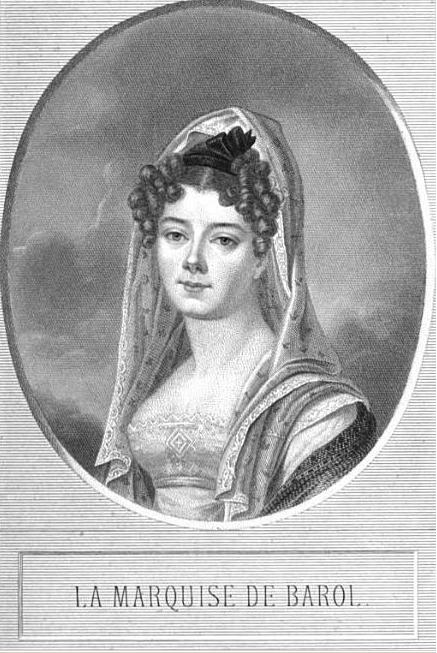
Several sources backing up this story are cited in an article by The Years of the Grape that you can find here.
King Carlo Alberto of Savoy became intrigued by the reputation of the wine and allegedly questioned its origin. Could such great wine not be French? At that time Italy was not yet a nation and the Savoy family, as well as all of the Piedmonts’ nobility, were Francophiles.
By royal request, or as a provocation, Giulia sent 325 ox-drawn wagons to the King. Each wagon contained a barrel of Barolo wine, one for each day of the year (save for the 40 days of Lent) so that the King and his court could delight in the Marquise’s wine each and every day.
The historical account (that can be found in the Wi.Mu museum in Barolo) of the wine load rolling onto the cobblestone roads of Turin is impressive, especially the description of the sound of the payload echoing on the then empty, quiet streets lined with arcades. For someone like me who knows the center of Turin and the route that goes from the Barolo wine region to the capital of the Reign of Savoy, this is a vivid vision.
And that is how in the Court of Turin Barolo came to be known as “Wine of Kings, King of Wines.”
It did not take long before Carlo Alberto of Savoy took an interest in the wines produced in the region of the Barolo. And so he bought the property of Verduno and Pollenzo and commissioned the care of the vineyards to General Staglieno, an oenologist who admired the French style. But I have to stop here because this is where the second story takes over.
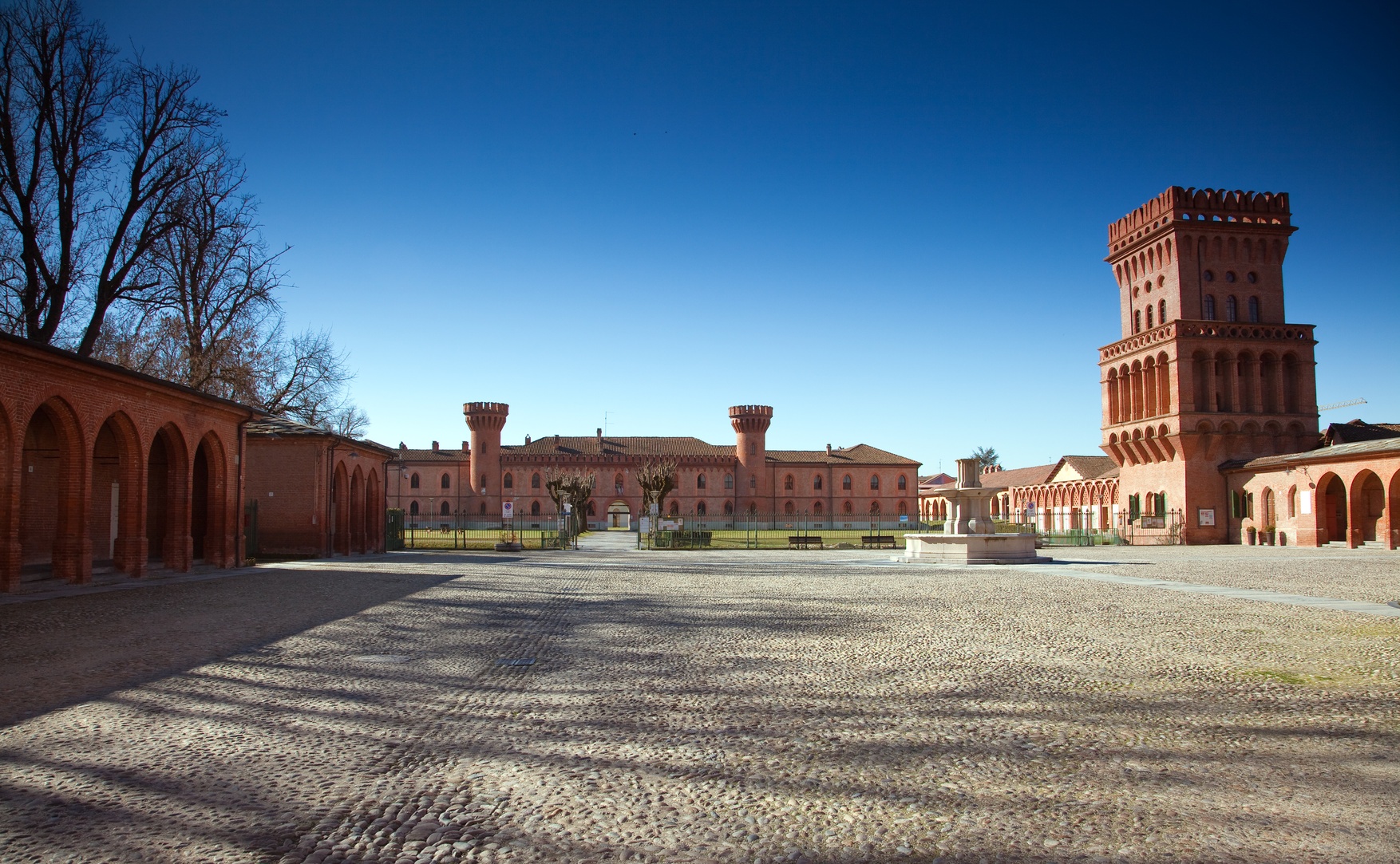
The Pollenzo Castle now houses the University of Gastronomic Science started by Slow Food
The King Carlo Alberto, Cavour, and General Staglieno Story
We left Camillo Benso, Count of Cavour (aka Cavour) at the introduction he made in the first story. His role, according to actual documents in several archives, is more important than that. He had traveled to France many times and was ingrained with its culture. When he was around 20 years old, he became Mayor of Grinzane (still part of the Barolo production area today). He was a prominent figure during the Italian Risorgimento and he had a pivotal role in the unification of Italy. He became Prime Minister and also Minister of Agriculture. The humble character of Piedmontese people prevented him from claiming all of his political and non-political accomplishments. He had worked very closely with the Savoy royal family.
1844 was the year when the Barolo as a dry, firm wine was put into bottles. Also, Barolo wine was not a market product and it only circulated in very elite circles.
Paolo Francesco Staglieno (a retired general of the Kingdom) was called upon by Camillo Benso and appointed to the position of oenologist at his Grinzane estate between 1836 and 1841. Staglieno's task was to produce quality wines geared towards aging that were stable enough to be exported. Staglieno fermented the wines dry, something that at the time was referred to as "the Staglieno method.”
According to this version of the story, Oudart was a grape and wine merchant (a very successful one), not an oenologist (surely not a “great” oenologist). For sure Oudart knew wine and it’s likely that he consulted Cammillo Benso at some point. By the time Oudart turned up in Piedmont from his Italian residency in Genova, King Carlo Alberto and Cavour were already following Staglieno's guidelines and both were producing dry wines (possibly Barolo).
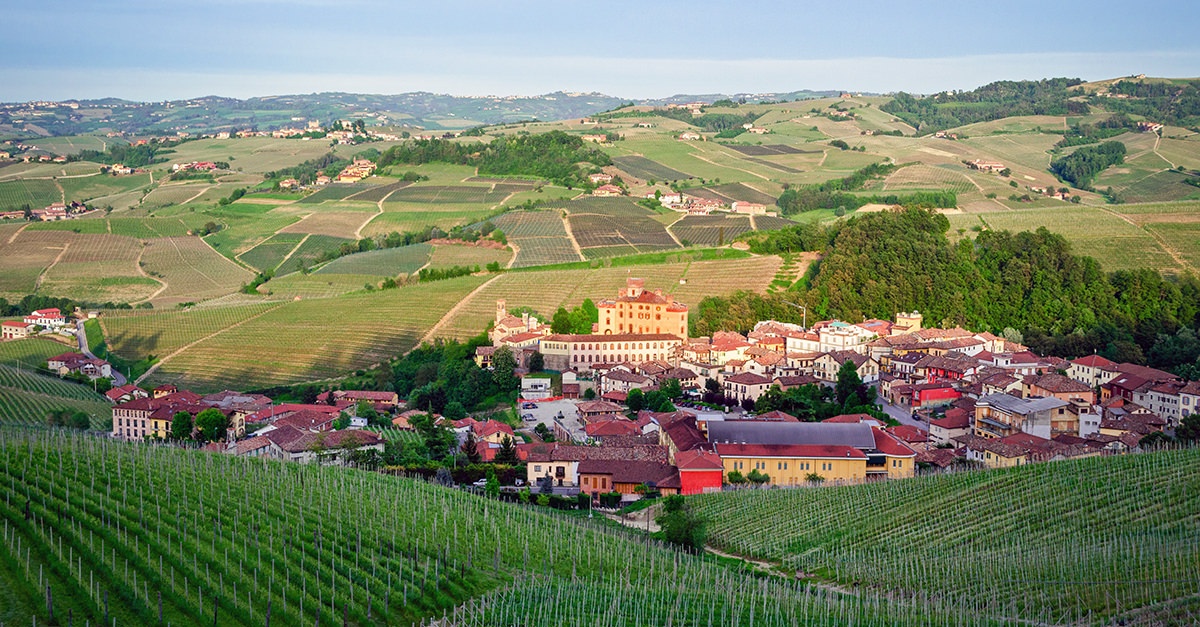
Barolo and its Castle once belonging to the Falletti family and now housing the Wi.Mu museum
The royal estates that set the stage for much of Staglieno’s work were l’Agenzia in Pollenzo near Bra (outside the Barolo production area), Fontanadredda in Serralunga d’Alba, and Castello di Verduno. Cavour had vineyards in Grinzane. Serralunga, Verduno, and Grinzane are all within the Nebbiolo for Barolo production area.
Backing up this story is the research by Kerin O'Keefe that was done in preparation for her book “Barolo and Barbaresco: The King and Queen of Italian Wine.” Another great source (in Italian only) is “Louis Oudart and the noble wines of Piedmont” by Anna Riccardi Candiani. Her revelation is without appeal:
Even though I made extensive research in archives and libraries, I did not find any document crediting a link between the oenologist - Oudart - and Barolo. I am sorry to disappoint the supporters of this rumor and I must declare that the story has no basis.
Staglieno himself left written traces that he could have “invented” modern Barolo.
Staglieno in his “Istruzione intorno al miglior modo di fare e conservare i vini in Piemonte” (Instructions on the Best Way to Make and Preserve Wines in Piedmont, first edition 1835) clearly states that the best wine is made by fermenting the must to completion, without leaving any residual sugar.
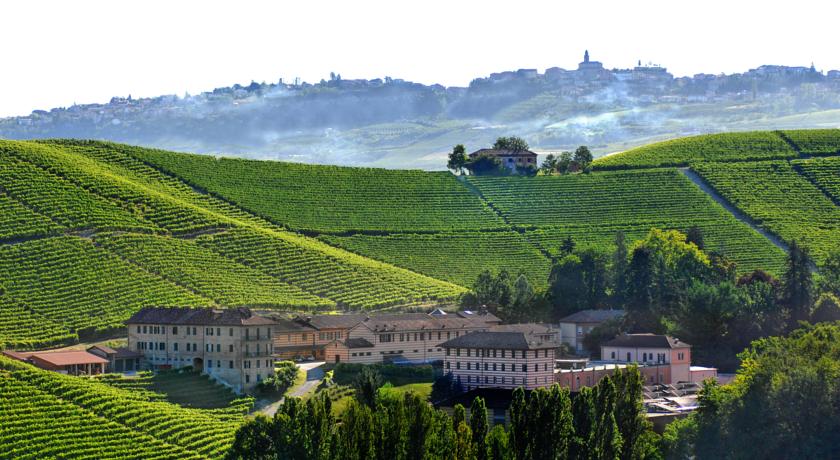
The Fontanafredda Estate in Serralunga was named the 2017 European Wine Estate of the year by Wine Enthusiast
Therefore, granted that Staglieno was working with Nebbiolo grapes only, King Carlo Alberto, Cavour, and General Staglieno were responsible for the modern dry version. He also fostered the idea of mandatory aging.
I hope you enjoyed reading the two stories about the history of Barolo. My conclusion is that in Piedmont they learned fine winemaking from the French and that both Cavour and Staglieno felt that there was no reason (given the extraordinary Nebbiolo grapes that grew in Piedmont) not to produce a “French-level” dry wine. In the abstract: made in Italy by Italians, inspired by the French.
Many of the places mentioned in this blog come alive on our Chef Bike Tour of Piedmont and in our private hiking and cycling tours there. We visit and stay overnight at some of the wine estates mentioned above and ride the stunning hills and ridges of the Barolo production area.



